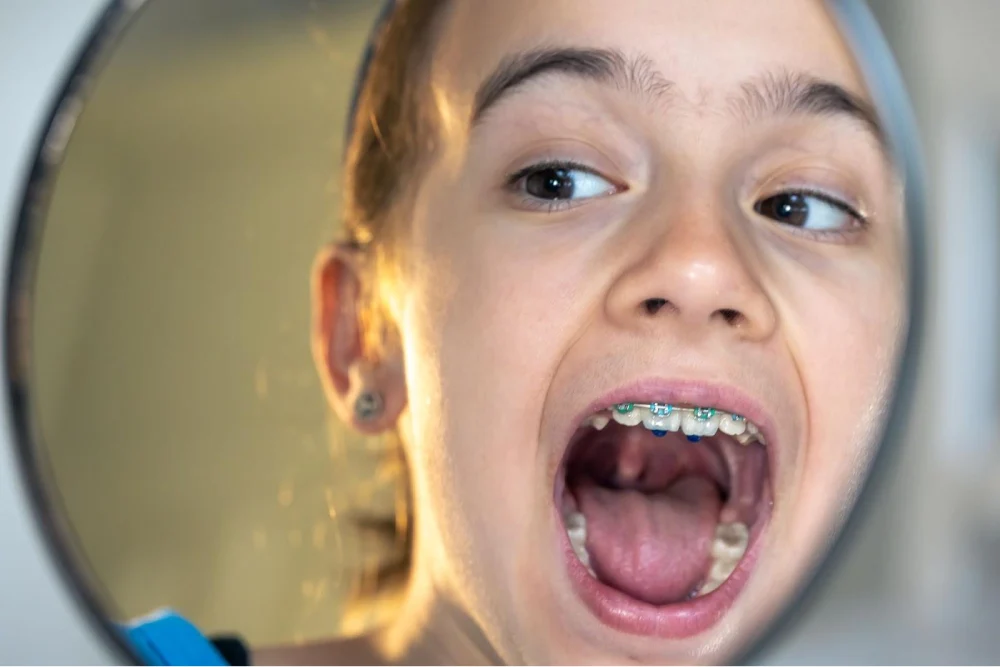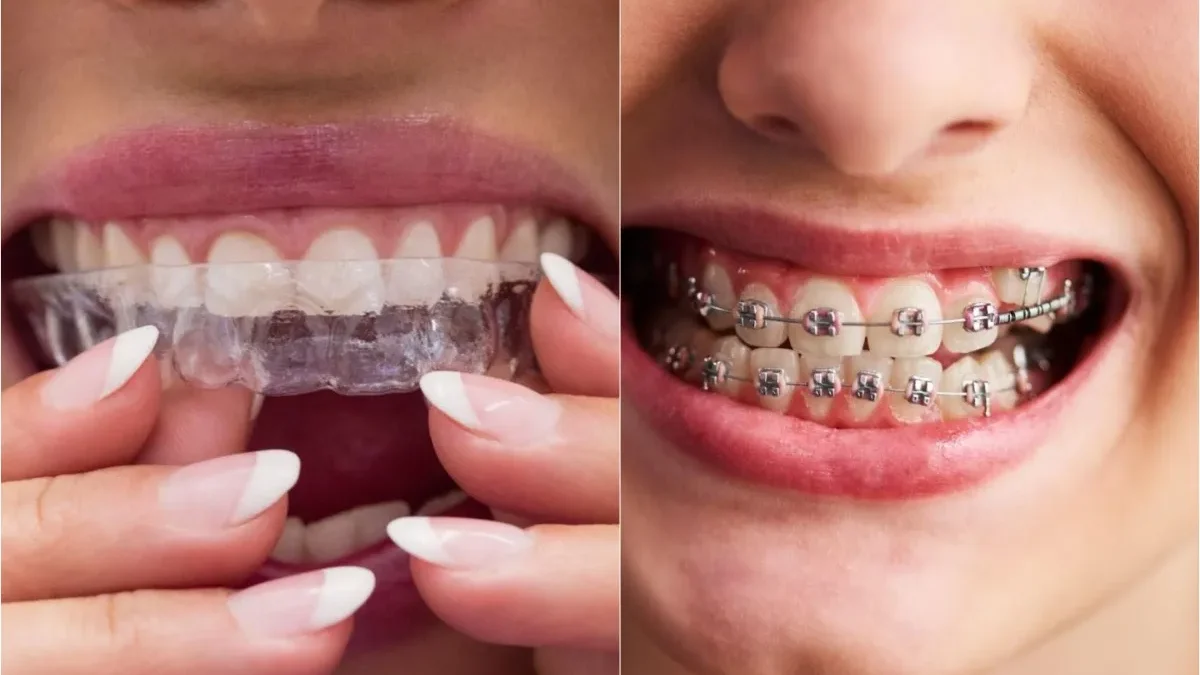When it comes to orthodontic treatments, you are generally faced with two main options: traditional metal braces and the more modern alternative, Invisalign. Both methods are effective in aligning teeth, but they differ significantly in terms of aesthetics, comfort, and other factors. In this article, we’ll explore the key differences between Invisalign and traditional braces to help you decide which option might be best suited for you.
Table of Contents
1. Aesthetic Appeal
Invisalign uses clear aligners to straighten teeth, making them almost invisible when worn. This is particularly appealing to adults and professionals who prefer a discreet option during their orthodontic treatment. On the other hand, metal braces are made of brackets and wires that are attached to the teeth, and they are usually quite visible. Although coloured bands can be added for a personalised look, the braces themselves are not easily concealed.
2. Comfort
The aligners used in Invisalign are custom-made to fit snugly over your teeth. There are no metal parts or sharp edges, so the risk of irritation to the mouth is minimal. Additionally, the aligners are removable, allowing you to eat, brush, and floss with ease. In contrast, metal braces can sometimes cause discomfort due to their brackets and wires, which may irritate the gums and cheeks. Adjustments to the braces can also cause some discomfort as the teeth shift into place. Certain foods must be avoided to prevent damage to the braces.
3. Treatment Duration
The length of treatment with Invisalign varies depending on the individual case, but it is often shorter than with traditional braces. Aligners are typically replaced every two weeks, gradually moving the teeth into their desired positions. Treatment with traditional braces usually takes between 18 months and 2 years, depending on the complexity of the case. The treatment duration can be longer if significant adjustments are needed.

4. Maintenance and Hygiene
Because Invisalign aligners are removable, maintaining oral hygiene is straightforward. You can brush and floss your teeth as normal without any obstructions. The aligners themselves should also be cleaned regularly to maintain their clarity. Cleaning your teeth with traditional braces can be more challenging. Food particles can get stuck in the brackets and wires, leading to plaque build-up. Special brushes and tools may be required to clean around the braces effectively.
5. Cost
Invisalign and traditional braces tend to have similar costs, with only slight differences depending on individual cases. The invisalign cost in the UK typically starts from £1,650 depending on the complexity of the treatment and the specific dental provider. Traditional metal braces, while often considered more affordable due to the long-standing use of less expensive materials, usually fall within a similar price range. The choice between the two often comes down to personal preference and the specific needs of the patient, rather than a significant cost difference.
6. Post-Treatment Care
After completing Invisalign treatment, you may need to wear a retainer to maintain the new position of your teeth. Retainers are usually worn at night and can be custom-made to fit your teeth. Similarly, retainers are often required after traditional braces are removed to ensure that the teeth do not shift back to their original positions. The type and duration of retainer use will vary depending on the individual case.
7. Discipline and Commitment
One of the key differences between Invisalign and traditional braces is the level of discipline required from the patient. Invisalign aligners need to be worn for at least 22 hours a day to be effective. This means the aligners should only be removed for eating, drinking (anything other than water), and oral hygiene routines. The success of the treatment heavily depends on the patient’s commitment to consistently wearing the aligners as directed. In contrast, traditional braces do not require the same level of daily discipline. Once the braces are applied, they remain in place throughout the treatment period, and adjustments are managed entirely by the orthodontist during regular appointments. This “set it and forget it” approach makes traditional braces less dependent on the patient’s day-to-day commitment.
Conclusion
When choosing between Invisalign and traditional braces, you should consider factors such as aesthetic concerns, comfort preferences, treatment duration, cost, and the level of discipline required. Invisalign offers a discreet and comfortable solution, but it requires a higher level of commitment from the patient. Traditional braces, while more visible, provide a tried and tested method that is particularly effective for more complex cases and requires less day-to-day involvement from the patient. A free Invisalign consultation with your orthodontist will help you determine the most suitable treatment for your needs.

